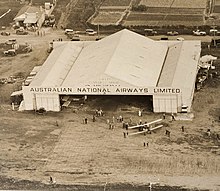
Sir Charles Edward Kingsford Smith, nicknamed Smithy, was an Australian aviation pioneer. He piloted the first transpacific flight and the first flight between Australia and New Zealand.

Sydney Kingsford Smith Airport is an international airport in Sydney, Australia, located 8 km (5 mi) south of the Sydney central business district, in the suburb of Mascot. The airport is owned by Sydney Airport Holdings. It is the primary airport serving Sydney and is a primary hub for Qantas, as well as a secondary hub for Virgin Australia and Jetstar, and a focus city for Air New Zealand. Situated next to Botany Bay, the airport has three runways. Sydney Kingsford Int'l Airport covers 907 hectares of land.
This is a list of aviation-related events from 1934:

The Avro 618 Ten or X was a passenger transport aircraft of the 1930s. It was a licensed version by Avro of the Fokker F.VIIB/3m.

The Southern Cross is a Fokker F.VIIb/3m trimotor monoplane that was flown by Australian aviator Charles Kingsford Smith, Charles Ulm, Harry Lyon and James Warner in the first-ever trans-Pacific flight to Australia from the mainland United States, a distance of about 11,670 kilometres (7,250 mi), in 1928.

Australian National Airways (ANA) was Australia's predominant aerial carrier from the mid-1930s to the early 1950s.
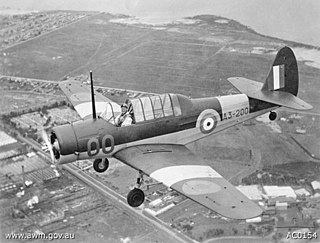
The CAC Wackett Trainer was the first aircraft type designed in-house by the Commonwealth Aircraft Corporation of Australia. The name was derived from its designer Lawrence Wackett. "In acknowledgement of the CAC Manager's enormous contribution, the RAAF were to call the aircraft the Wackett Trainer"

Desoutter is a British monoplane liaison aircraft manufactured by Desoutter Aircraft Company at Croydon Aerodrome, Surrey.

The de Havilland DH.61 Giant Moth was a 1920s British large single-engined biplane transport built by de Havilland at Stag Lane Aerodrome, Edgware. Intended primarily for use in Australia, a number were also shipped to Canada.

Sir Patrick Gordon Taylor,, commonly known as Bill Taylor, was an Australian aviator and author. He was born at Mosman, Sydney, and died in Honolulu.
Alice Ishbel Hay Creswick is best known for her work in the Free Kindergarten Union (FKU) and as an important figure in the Australian Red Cross Society (ARCS) during World War II.

The Avro Cadet is a single-engined British biplane trainer designed and built by Avro in the 1930s as a smaller development of the Avro Tutor for civil use.
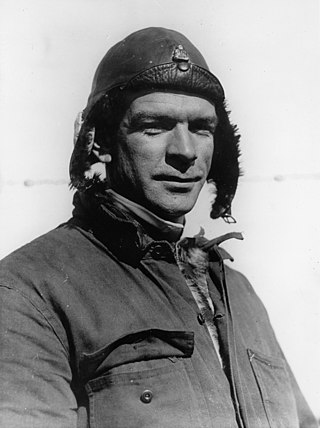
Charles Thomas Philippe Ulm was a pioneer Australian aviator. He partnered with Charles Kingsford Smith in achieving a number of aviation firsts, serving as Kingsford Smith's co-pilot on the first transpacific flight and the first flight between Australia and New Zealand. He and two others disappeared near Hawaii in 1934 while undertaking a test flight for an air service between Australia and the United States.
Keith Allison Virtue MBE was a pioneer Australian aviator. Sir Lawrence Wackett, in the foreword of Keith Virtue's biography, writes that he was an experienced airman himself but he marvelled at the ability and skill of Keith Virtue and counts him as one of the greatest of the Australians who devoted their life's work to the task of pioneering airlines in Australia.
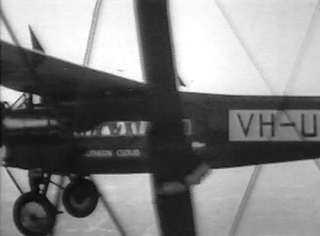
The Southern Cloud, registered VH-UMF, was one of five Avro 618 Ten three-engined aircraft flying daily airline services between Australian cities for Australian National Airways in the early 1930s.

Flight Lieutenant Charles William Anderson Scott, AFC was an English aviator. He won the MacRobertson Air Race, a race from London to Melbourne, in 1934, in a time of 71 hours.

Maylands Airport on the Maylands Peninsula, in Maylands, Western Australia, was the main landing place of a significant number of record breaking flights in the early stages of flight in Australia. It was Perth's first official airport and was the birthplace of commercial aviation in Western Australia.
Hart Aircraft Service Pty. Ltd. was an Australian aviation company registered at Melbourne in mid-1929 with directors James Hart, John Hider and Norman Charles Trescowthick. Director James Hart (c1891-1951) was a former Royal Flying Corp aviator who had flown as gunner for Hereward de Havilland. Norman Trescowthick had served with distinction in the Australian Flying Corps' famous 4th Squadron with Arthur H. Cobby during the First World War.

Keith Vincent Anderson was an Australian pioneer aviator. In 1927 Anderson and his co-pilot, "Bobby" Hitchcock, undertook a round-Australia flight. Anderson and Hitchcock died in 1929, after a forced landing in the desert, during the search for Charles Kingsford Smith and his crew, who had been forced to land in Western Australia on the first leg of a flight in the Southern Cross aircraft to London.
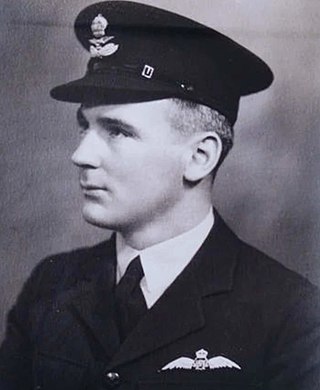
George Henry "Harry" Purvis, AFC was an Australian pioneer aviator, engineer, airline pilot, air-force pilot and author. He was the engineer responsible for maintenance of the famed Southern Cross aircraft. Purvis often flew as co-pilot with Sir Charles Kingsford Smith and was the last person to fly the Southern Cross. Purvis was co-pilot to P. G. Taylor on the first flight across the lower Pacific Ocean from Australia to South America, landing in Chile in 1951.
